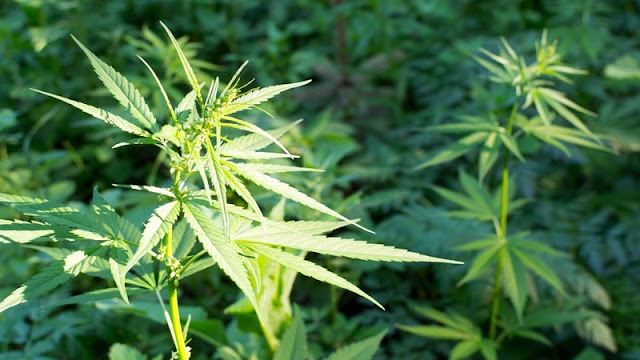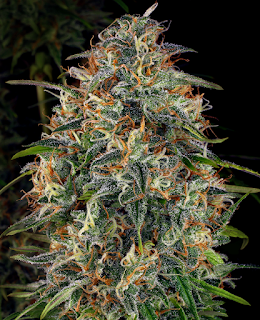How To Grow Marijuana Indoor?
Cannabis Growing Indoors
Apart from “true breeding” varieties, our seed collection consists of different F-1 hybrids. Crossing two “true breeding” strains (hybridizing) gives F-1 hybrids that possess the so-called “Hybrid Vigor”. This means that the F-1 generation is a lot more potent than either parent. Marijuana seeds. F-1 generations also consist of uniform plants.
Growing cannabis indoors has seen a dramatic rise in popularity in recent years. When done properly it produces excellent quality stash which is usually much better than that sold on the streets. Growing cannabis indoors relies on the use of powerful artificial lights to replicate the effect of the sun. These lights typically take hundreds of Watts of electrical power to run and are commonly HPS (High Pressure Sodium) but fluorescent lights, metal halide, LED light and other kinds have all been used successfully.
Cannabis loves light and the successful indoor grower tries to deliver as much light as possible. Consider 250 watts/m² only as a minimum starting point and realistically aim for 2-3 times that level if possible. More light will mean bigger, denser buds and superior yields. As well as delivering high light levels the successful indoor grower keeps the plants as near the light as possible to maximise the light intensity reaching the leaves and buds. Often the personal medical or recreational grower will have a growing area of 1-2 m² designed below a single 400W or 600W high pressure sodium (HPS) lamp.
 The indoor cannabis grower has to be careful that the plant doesn’t grow too near to the hot light and damage itself. If the light feels cool to the back of the hand it will be cool for the plant also. For a 400W lamp, growers may not want to allow plants to grow within 40-50cm of the bulb. Cannabis plants can be bent over and tied if they get too tall, some indoor growers deliberately train their plants this way to get as much of the plant as possible close (but not too close) to the high intensity light. Buy marijuana online USA
The indoor cannabis grower has to be careful that the plant doesn’t grow too near to the hot light and damage itself. If the light feels cool to the back of the hand it will be cool for the plant also. For a 400W lamp, growers may not want to allow plants to grow within 40-50cm of the bulb. Cannabis plants can be bent over and tied if they get too tall, some indoor growers deliberately train their plants this way to get as much of the plant as possible close (but not too close) to the high intensity light. Buy marijuana online USA
Certain strains respond well to having the growing tip of the plant pinched out (known as ‘topping’, ‘FIM’ or pinching) after the 4th or 5th leaf pair. The resulting plants are often smaller and bushy without the dominant main growth stem (or ‘cola’) and are preferred for some smaller growrooms.
Some indoor growers train the plants underneath a metal chickenwire-style screen allowing only the buds to grow vertically while the stem and growing part of the plant grow horizontally. This SCROG (screen of green) technique allows the indoor grower to keep as much of the bud growth as possible equidistant to the lamp, maximising the efficiency and yield.
Specialist suppliers offer ‘air cooled’ lights for the indoor grower that enclose the light in a glass casing. A fan forces air over the light and outside the growroom via tubing, keeping the grow room cool and allowing the plants to grow taller without burning.Grow rooms are typically kept between 24°C -30°C for optimum results. Higher temperatures can cause the plants to wilt and cooler temperatures may slow down growth. The plants will need a gentle breeze from a fan, and a steady supply of fresh air which can be from your house or from outside. Stale air from the growroom is normally continually extracted outdoors by a fan and de-odorised with a carbon filter.
Those indoor growers that do get caught are often betrayed by the smell of their growroom, so some also invest in ozone generators to further remove odours from the exhausted grow room air.
 Germinating cannabis seeds can be done in various ways and the internet is full of cannabis grow forums that document various methods. One simple method is to simply place seeds about 1cm below the surface of firmly pressed damp soil. A film of kitchen cellophane over the surface helps keep conditions moist and after a few days of temperatures around 20-25°C the seeds should germinate. Growing from cuttings of ‘mother’ plants is an alternative to growing from seeds.
Germinating cannabis seeds can be done in various ways and the internet is full of cannabis grow forums that document various methods. One simple method is to simply place seeds about 1cm below the surface of firmly pressed damp soil. A film of kitchen cellophane over the surface helps keep conditions moist and after a few days of temperatures around 20-25°C the seeds should germinate. Growing from cuttings of ‘mother’ plants is an alternative to growing from seeds.
In the first stages of life the seedlings are happy to start with lower light intensities often a metre below an HPS light, or closer to fluorescent lights. The artificial lights are normally ‘on’ for 18-24 hours per day. During this time the seedlings are in a state of vegetative growth, they will continue to grow roots, leaves and branches but no bud. Order medical marijuana seeds online
By reducing daily light to ~12 hours the cannabis plant transitions into the ‘flowering’ phase. This stage normally requires 8-10 weeks (but more for certain strains) and it is during this time that the female flowers form. During this stage the plants gain a lot of bulk and will tolerate more nutrients and very bright light.Some growers introduce supplemental lighting to ensure the very best yields. At the end of this process the plant is cut down and the buds (unpollinated female flowers) are dried. Some growers harvest the plants when they see the trichomes start to transition from clear to cloudy (this requires a powerful magnifying glass/scope to see). This often coincides with the bud producing lots of red/orange pistil hairs. Some smokers prefer bud harvested early, others prefer late- harvested bud. When growing- your-own it is you that decides exactly how you like it.....KNOW MORE...





Comments
Post a Comment